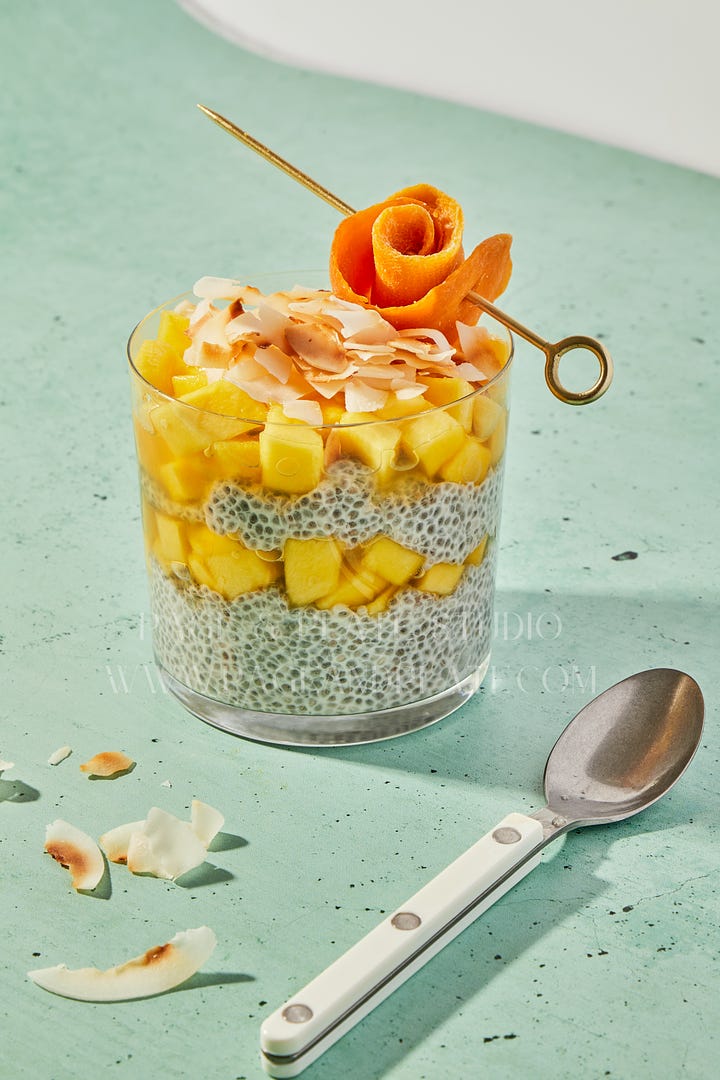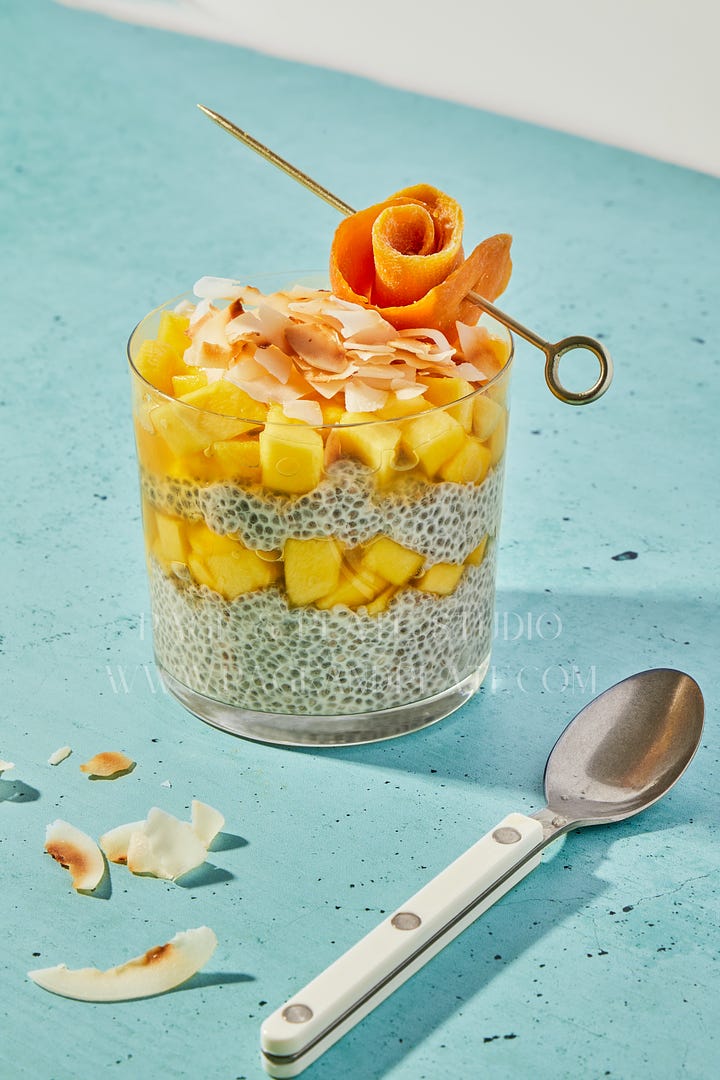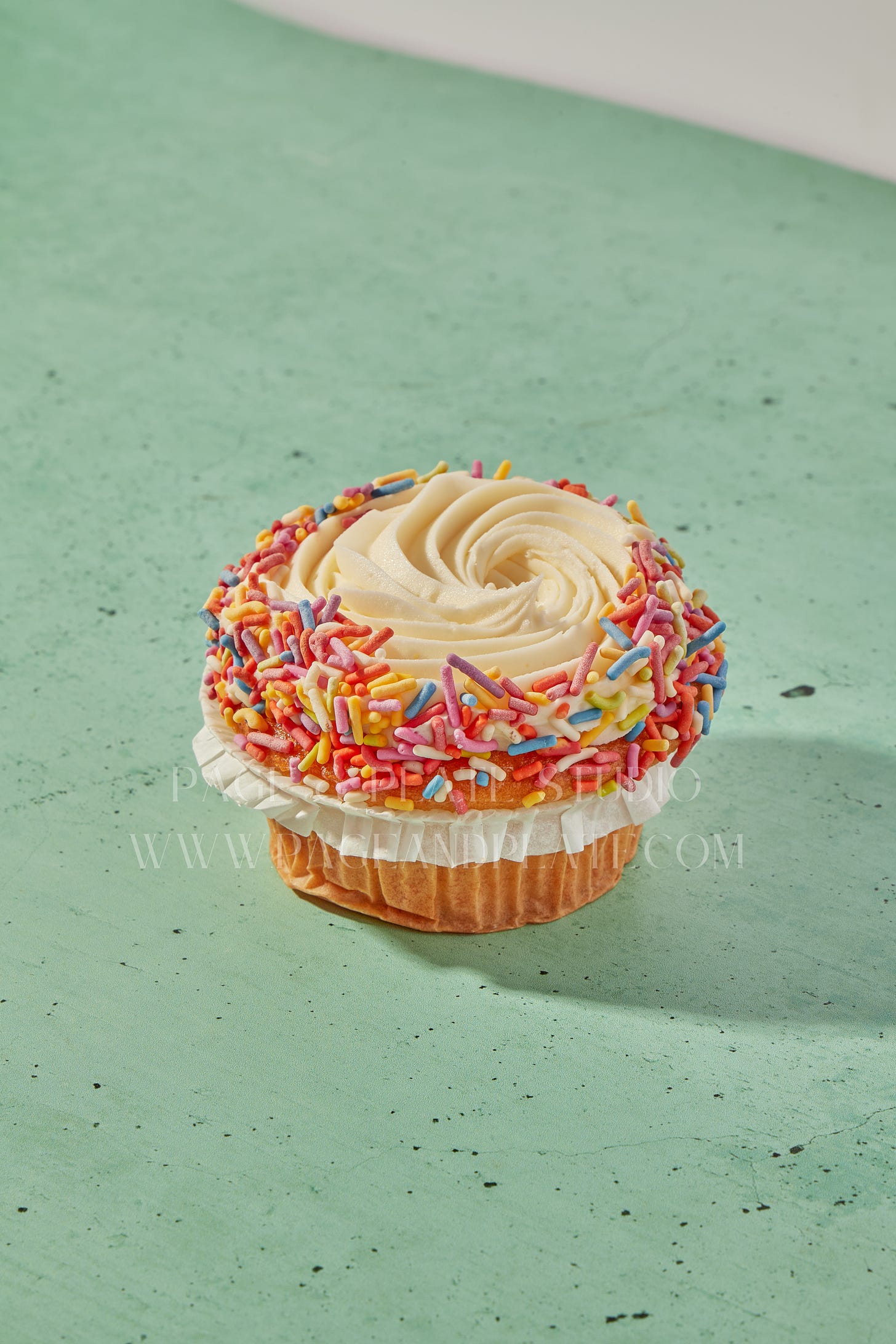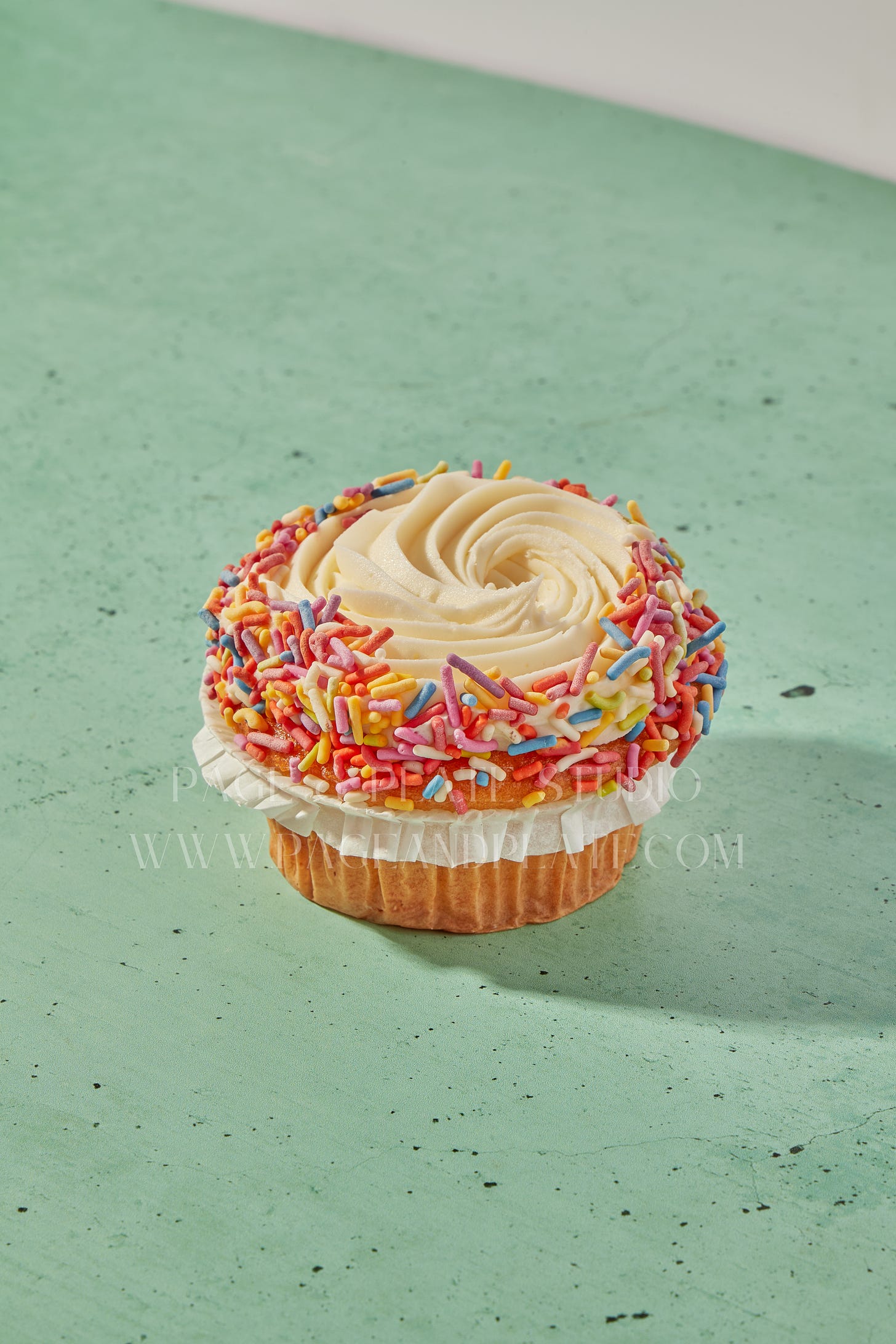Welcome to the Tuesday post for all subscribers, about AI and how it affects the industry in which I work. Light stuff! On Friday, paid subscribers will receive a recipe for mango chia pudding. As always, thank you for being here.
First, a note. My hope with this mini-series is to dig into two parts of AI: first, the wonder of it all. I’m one of the AI-curious photographers, willing to experiment and use it to help streamline my workflow. It’s been helpful—truly, game-changing—and I’m curious to hear what non-photographers think about the way I use it. Second, as a food photographer and stylist, I’ve also been muddling over the ethics of AI’s use in food photography. That’s coming next week. Here’s part one: how I use (and love) AI.
Knowing how to ask for exactly what you want is hard enough when you’re talking to a human, but when you’re talking to a bot, it becomes even more difficult. For a while there was a meme going around about how AI would never replace creative freelancers because to get good results, clients would have to ask for exactly what you want. We love freelancer humor!
I’ve played around with Photoshop and Adobe Firefly to generate photos of food using AI, and I’ve had great success in generating images of food with both programs. Bowl of cereal? Easy. Chocolate cake? There it is. The generic food prompts seem easy to input and get what you want. More on the ethics behind generating pictures of food from scratch next week. But where the magic happens for me, where I raise my hands in praise of the holy Adobe trinity, is when I’m editing.
When I say that I use AI to help me edit photos, I don’t mean that there’s a robot sitting beside me and helping me process photos to correct white balance, add signature treatments for clients, and cull through my selects. I wish! Rather, I mean that I use generative AI to help me fix imperfections in photos for clients.
I define imperfections as small details that do not relate to the product, the specific recipe, or the branding. I think of it as an on-set production assistant after the fact. Is there a stain on a linen? I’ll use generative AI to fix it instead of the clone tool to save time and effort. Is the placemat not quite big enough to cover the table? I’ll extend it using generative AI. It’s a really easy way to fix these tiny details, and it is a lifesaver. Here’s an example of how I’ve used it recently:
This cupcake was a test shoot to nail some lighting that I’d been wanting to try. When I got home from Whole Foods, though, I noticed that the bottom edge of the cupcake had collapsed a bit.
Womp. I could have turned the cupcake, but I really liked the way that angle of the frosting was picking up the light. Instead, I pulled it into Photoshop, highlighted the crumpled area, and hit generative fill. Ta-dah!
Yes, I could have fixed this using any other number of tools. Instead, I made a robot do it for me and saved time and frustration and squints and eye rubs from staring at a computer screen. If this is what the future looks like, I’m in.
The much less exciting reality is that the editing workflow I use has incorporated some sort of artificial intelligence-powered tool for years now. That handy-dandy remove background tool in Canva? That’s AI. The tool that allows me to select the backdrop and isolate it onto its own layer to manipulate the color? AI.


I actually used AI to manipulate this photo in one other way. Can you guess? First one to respond with the correct answer gets a free paid subscription on me! (Yes, I’m giving Pam.)
See you back here on Friday for mango chia pudding and then again on Tuesday for AI part II!







I think the way you're incorporating AI into your photos is ethical. I've seen a lot of AI food photography with fake spoons or fake desserts, which completely removes the human element out of the entire picture. Your photos look great! Now I'm wondering if AI can take out reflections.
Background color :)